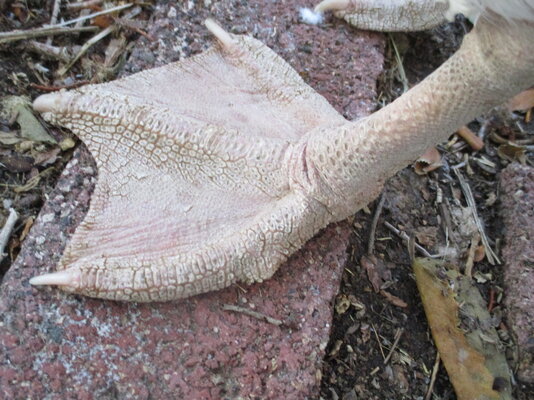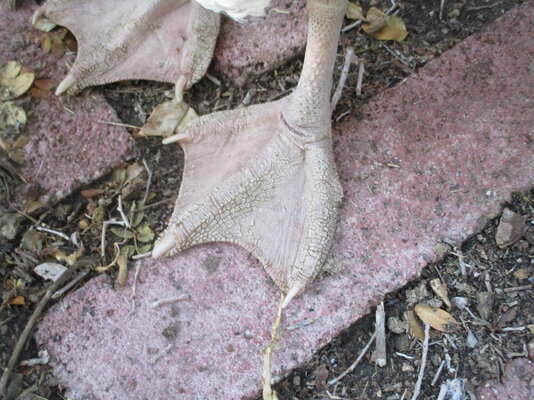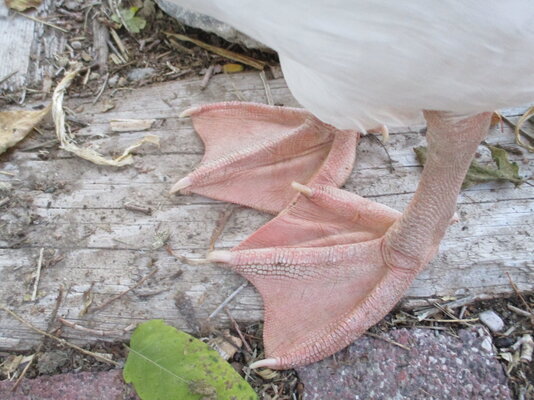NevadaEmma
Songster
- Mar 24, 2021
- 374
- 1,159
- 216
I have four geese that have grown up together that I purchased online from Metzer farms. They all seem to be happy and thriving. But one of them has very dry, rough skin on her feet. They are also kind of a bluish color. She walks around just fine, but has stopped "flying" down the property when the follow me in the morning to check on the chickens. I checked her feet and I do not think she has bumblefoot. The other geese have smoother feet and are a healthy shade of pink.
Any ideas? We do not have any waterfowl vets in the area even though we are in a rural community in northern Nevada, Any vet I have talked with said to bring her into their clinic. That probably will not happen, she does not like to be held or confined and I do not want to cause her stress.
Thanks
Any ideas? We do not have any waterfowl vets in the area even though we are in a rural community in northern Nevada, Any vet I have talked with said to bring her into their clinic. That probably will not happen, she does not like to be held or confined and I do not want to cause her stress.
Thanks





 I can't imagine how our baby survived with bites all over her tiny 6 lb body or how an animal survives with a case like this.
I can't imagine how our baby survived with bites all over her tiny 6 lb body or how an animal survives with a case like this.